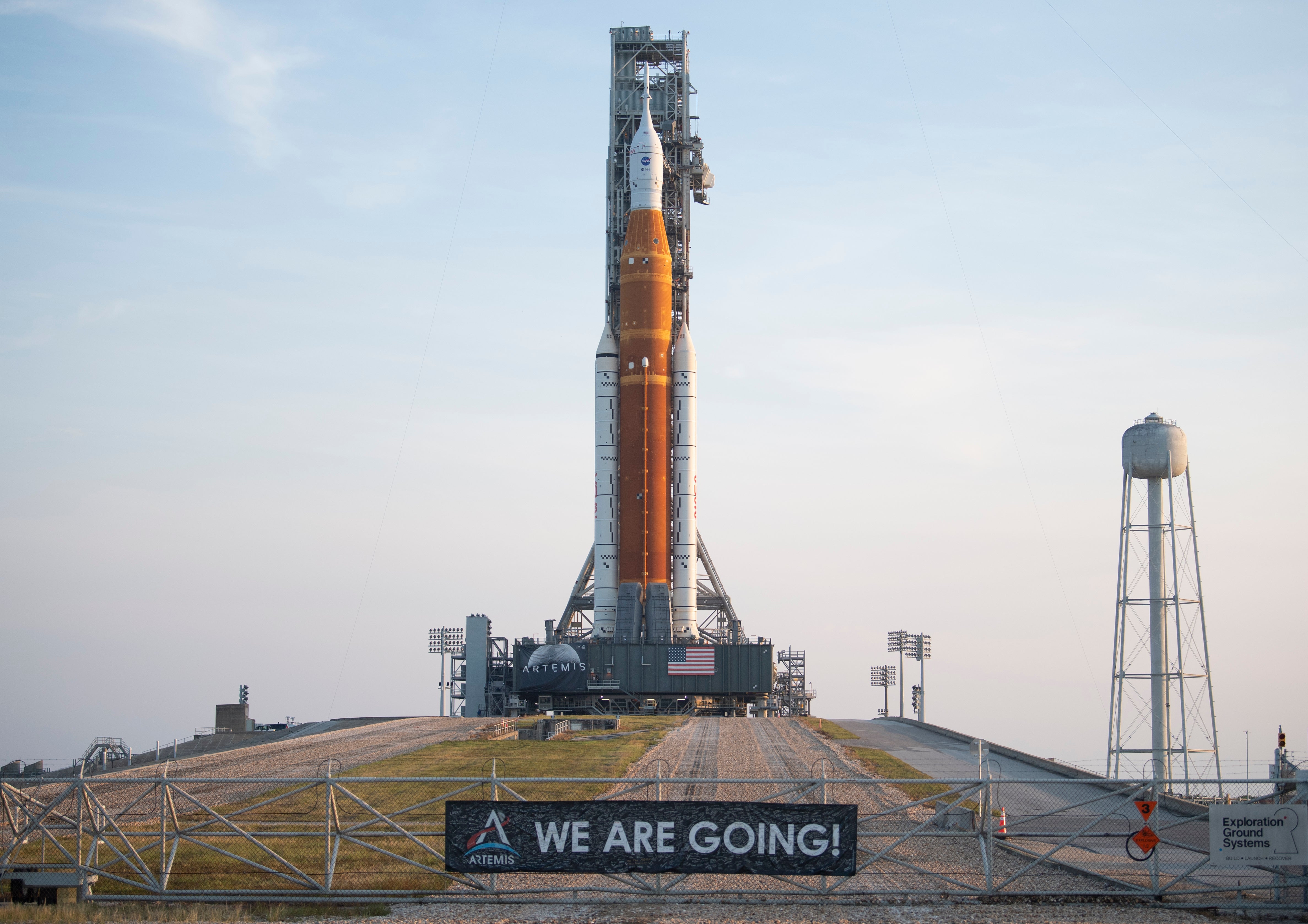Nasa’s Moon rocket arrives at launchpad ahead of huge Artemis launch
‘WE ARE GOING’ reads banner in front of launchpad

Your support helps us to tell the story
From reproductive rights to climate change to Big Tech, The Independent is on the ground when the story is developing. Whether it's investigating the financials of Elon Musk's pro-Trump PAC or producing our latest documentary, 'The A Word', which shines a light on the American women fighting for reproductive rights, we know how important it is to parse out the facts from the messaging.
At such a critical moment in US history, we need reporters on the ground. Your donation allows us to keep sending journalists to speak to both sides of the story.
The Independent is trusted by Americans across the entire political spectrum. And unlike many other quality news outlets, we choose not to lock Americans out of our reporting and analysis with paywalls. We believe quality journalism should be available to everyone, paid for by those who can afford it.
Your support makes all the difference.Nasa’s Space Launch System, which will one day take humanity back to the Moon, has arrived at its launchpad.
The rocket now stands in front of a large banner reading “WE ARE GOING” – a reflection of Nasa’s decades-long effort to get back to the Moon.
The 322-foot (98-meter) rocket emerged from its mammoth hangar late Tuesday night, drawing crowds of Kennedy Space Center workers. It took nearly 10 hours for the rocket to make the four-mile trip to the pad, pulling up at sunrise.
NASA is aiming for an Aug. 29 liftoff for the lunar test flight. No one will be inside the crew capsule atop the rocket, just three mannequins — test dummies swarming with sensors to measure radiation and vibration.
The capsule will fly around the moon in a distant orbit for a couple weeks, before heading back for a splashdown in the Pacific. The entire flight should last six weeks.
The flight is the first moonshot in NASA’s Artemis program. The space agency is aiming for a lunar-orbiting flight with astronauts in two years and a lunar landing by a human crew as early as 2025. That’s much later than NASA anticipated when it established the program more than a decade ago, as the space shuttle fleet retired. The years of delays have added billions of dollars to the cost.
NASA’s new SLS moon rocket, short for Space Launch System, is 41 feet (12 meters) shorter than the Saturn V rockets used during Apollo a half-century ago. But it’s more powerful, using a core stage and twin strap-on boosters, similar to the ones used for the space shuttles.
“When you look at the rocket, it almost looks retro. It looks like we’re looking back toward the Saturn V,” NASA Administrator Bill Nelson said this month. “But it’s a totally different, new, highly sophisticated, more sophisticated rocket and spacecraft.”
Twenty-four astronauts flew to the moon during Apollo, with 12 of them landing on it from 1969 through 1972. The space agency wants a more diverse team and more sustained effort under Artemis, named after Apollo’s mythological twin sister.
“I want to underscore that this is a test flight,” Nelson said. “It’s just the beginning.”
This was the rocket’s third trip to the pad. A countdown test in April was marred by fuel leaks and other equipment trouble, forcing NASA to return the rocket to the hangar for repairs. The dress rehearsal was repeated at the pad in June, with improved results.
Additional reporting by Associated Press
Join our commenting forum
Join thought-provoking conversations, follow other Independent readers and see their replies
Comments